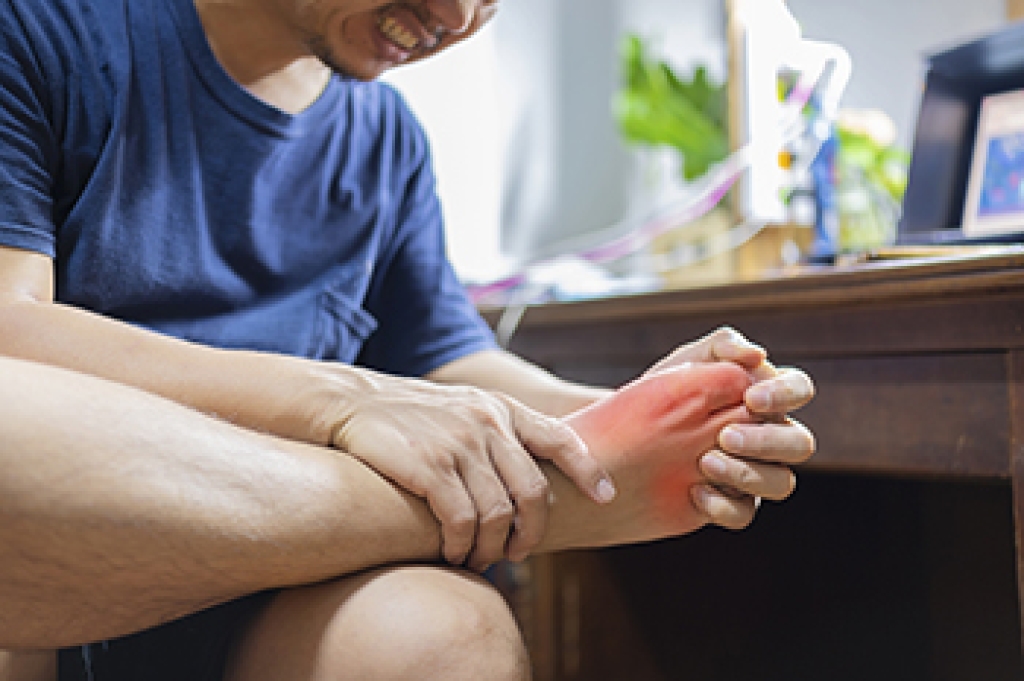
Ankle pain can arise from various causes that affect your mobility and quality of life. Common sources of ankle pain include sprains, strains, fractures, and conditions like osteoarthritis or rheumatoid arthritis. An ankle sprain occurs when the ligaments, which connect bones, are overstretched or torn. A strain involves damage to muscles or tendons in the ankle joint. Fractures are breaks in the bone, often resulting from trauma. Other causes, like gout or infections, can lead to severe swelling and pain. Flatfoot disorder and rheumatoid arthritis are also linked to ankle pain, often worsening over time. Managing ankle pain early is important to avoid further injury. A podiatrist can diagnose these conditions through physical exams and imaging studies, followed by a treatment plan to reduce pain and prevent complications. If you are suffering from ankle pain, it is suggested that you schedule an appointment with a podiatrist for a diagnosis and treatment.
Ankle pain can be caused by a number of problems and may be potentially serious. If you have ankle pain, consult with one of our podiatrists from Foot and Ankle Clinics, PA. Our doctors will assess your condition and provide you with quality foot and ankle treatment.
Ankle pain is any condition that causes pain in the ankle. Due to the fact that the ankle consists of tendons, muscles, bones, and ligaments, ankle pain can come from a number of different conditions.
Causes
The most common causes of ankle pain include:
- Types of arthritis (rheumatoid, osteoarthritis, and gout)
- Ankle sprains
- Broken ankles
- Achilles tendonitis
- Achilles tendon rupture
- Stress fractures
- Bursitis
- Tarsal tunnel syndrome
- Plantar fasciitis
Symptoms
Symptoms of ankle injury vary based upon the condition. Pain may include general pain and discomfort, swelling, aching, redness, bruising, burning or stabbing sensations, and/or loss of sensation.
Diagnosis
Due to the wide variety of potential causes of ankle pain, podiatrists will utilize a number of different methods to properly diagnose ankle pain. This can include asking for personal and family medical histories and of any recent injuries. Further diagnosis may include sensation tests, a physical examination, and potentially x-rays or other imaging tests.
Treatment
Just as the range of causes varies widely, so do treatments. Some more common treatments are rest, ice packs, keeping pressure off the foot, orthotics and braces, medication for inflammation and pain, and surgery.
If you have any questions please feel free to contact our offices located in Woodbury, West St. Paul, and Edina, MN . We offer the newest diagnostic tools and technology to treat your foot and ankle needs.




